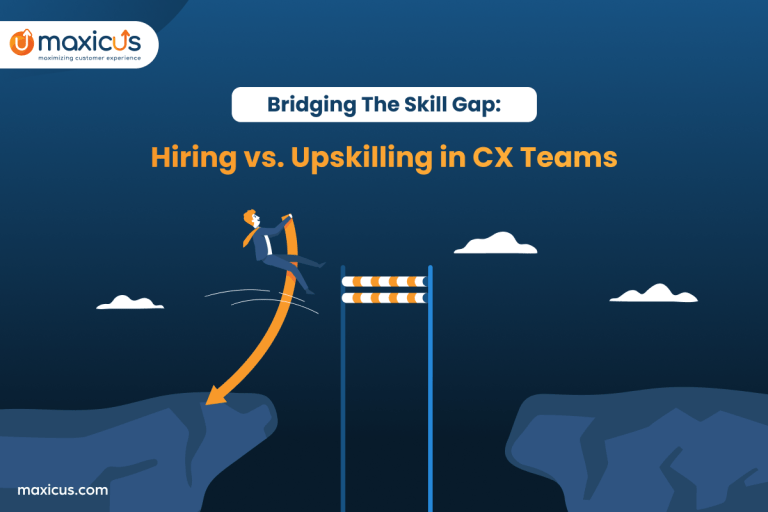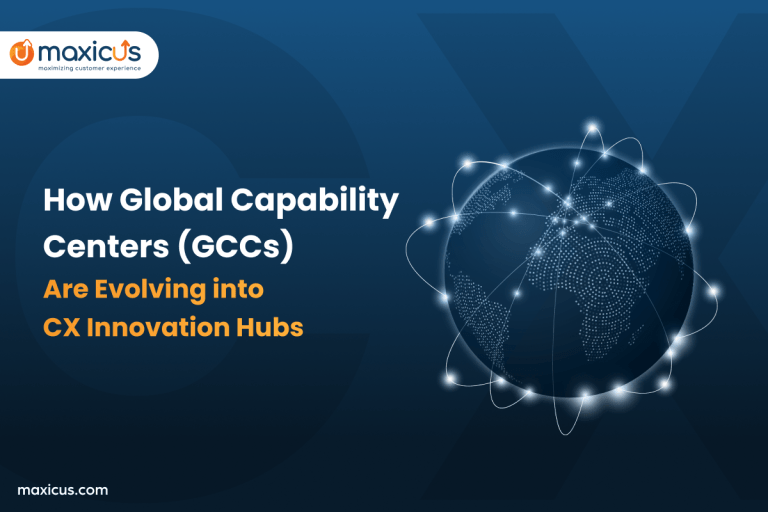How machine learning applications are shaping the course of CX forever
Machine learning applications are driven by artificial intelligence (AI) that provides computing systems the capability to automatically learn from previous experiences and improve without being explicitly programmed. ML systems are designed to process large datasets and several combinations of variables to uncover hidden relationships and provide predictive insights. This can be effectively used by customer-centric companies to gain and retain customers while delivering impeccable customer experience.
In the era of digitalization, we’re witnessing a very rapid growth in Big Data which is delivering a huge amount of customer data to companies. Hence, there is an inherent need to use this data for business growth by delivering a superior customer experience.
According to Forrester Research, companies that are mining insights and using those to drive their business will witness 27% annual growth in revenues from 2015 to 2020, touching $1.2 trillion in total revenue, and ML technologies are projected to evolve into a $100 billion market by 2025.
Essentially, businesses learn from historical customer interactions via ML techniques and fine-tune the customer experience holistically by delivering the right content at the right time via the right channel for the complete customer journey — from awareness and conversion to the retention and zealous advocacy.
Transform your customer experience with Machine Learning
Machine learning enhances customer experience
Businesses need to gather customer data for relationship management. However, to improve customer experience, companies need to deploy ML systems that can process Big Data encompassing enormous amounts of previous customer data for laser-sharp analytics. This will shed light on the customer touchpoints and the complete buyer journey. Using this historical data, the ML system should be able to predict customer behavior and match the same with actual customer action to further improve the predictive engine.
One important factor in lifecycle management and growing revenue for existing customers arises from churn management. Companies that can deploy ML capabilities effectively would be able to handle customer expectations, unveil the primary causes of account cancellations, detect early signs of risks that push customers to churn. This will help the company take corrective measures wherever applicable to improve customer retention.
Also, it prevents data leakages to maintain customer security at a contact center. A machine learning algorithm usually follows a certain type of data and then uses the patterns hidden in that data to answer more questions. For example, an ML application may be able to detect materials, like pen-papers and USB drives. This way you provide a holistic customer experience and do away with potential data leakages in an effort to gain customer trust.
Some examples & use cases of Machine Learning
Traffic Alerts
Now, Google Maps is probably the app we use whenever we go out and require assistance in directions and traffic. “Despite the Heavy Traffic, you are on the fastest route“. But, how does it know that?
Well, It’s a combination of people currently using the service, historic data of that route collected over time, and few tricks acquired from other companies. Everyone using maps is providing their location, average speed, the route in which they are traveling which in turn helps Google collect massive data about the traffic, which makes them predict the upcoming traffic and adjust your route according to it.
Social Media
One of the most common applications of Machine Learning is Automatic Friend Tagging Suggestions on Facebook or any other social media platform. Facebook uses face detection and image recognition to automatically find the face of the person and hence suggests we to tag that person based on DeepFace.
Facebook’s Deep Learning project DeepFace is responsible for the recognition of faces and identifying which person is in the picture. It also provides Alt Tags (Alternative Tags) to images already uploaded on Facebook. For eg., if we inspect the following image on Facebook, the alt-tag has a description.
Transportation and Commuting
If you have used an app to book a cab, you are already using Machine Learning to an extent. It provides a personalized application that is unique to you. Automatically detects your location and provides options to either go home or office or any other frequent place based on your history and patterns.
It uses a Machine Learning algorithm layered on top of Historic Trip Data to make a more accurate ETA prediction. With the implementation of Machine Learning, they find accuracy in Delivery and Pickup.
Virtual Personal Assistants
As the name suggests, Virtual Personal Assistants assist in finding useful information, when asked via text or voice. A few of the major applications of Machine Learning here are:
- Speech Recognition
- Speech to Text Conversion
- Natural Language Processing
- Text to Speech Conversion
All you need to do is ask a simple question like “What is my schedule for tomorrow?” or “Show my upcoming Flights“. For answering, your assistant searches for information or recalls your related queries to collect info. Recently personal assistants are being used in Chatbots which are being implemented in various food ordering apps, online training websites, and also in Commuting apps.
Self Driving Cars
Well, here is one of the coolest applications of Machine Learning. It’s here and people are already using it. Machine Learning plays a very important role in Self Driving Cars and we’re sure you’ve heard of Tesla. The leader in this business and their current Artificial Intelligence initiatives are driven by hardware manufacturer NVIDIA, which is based on an Unsupervised Learning Algorithm.
NVIDIA stated that they didn’t train their model to detect people or any object as such. The model works on Deep Learning and it crowdsources data from all of its vehicles and its drivers. It uses internal and external sensors that are a part of IoT.
Dynamic Pricing
Setting the right price for a good or service is an old problem in economic theory. There are a vast amount of pricing strategies that depend on the objective sought. Be it a movie ticket, a plane ticket, or cab fares, everything is dynamically priced. In recent years, artificial intelligence has enabled pricing solutions to track buying trends and determine more competitive product prices.
How does Uber determine the price of your ride?
Uber’s biggest uses of Machine Learning comes in the form of surge pricing, a machine learning model nicknamed “Geosurge”. If you are getting late for a meeting and you need to book an Uber in a crowded area, get ready to pay twice the normal fare. Even for flights, if you are traveling in the festive season the chances are prices will be twice the original price.
Online Video Streaming
With over 182 million subscribers worldwide, there is no doubt that Netflix is the daddy of the online streaming world. Netflix’s speedy rise has all movie industrialists taken aback – forcing them to ask, “How on earth could one single website take on Hollywood?”. The answer is Machine Learning.
Fraud Detection
Experts predict online credit card fraud to soar to a whopping $32 billion in 2020. That’s more than the profit made by Coca Cola and JP Morgan Chase combined. Fraud Detection is one of the most necessary applications of Machine Learning. The number of transactions has increased due to a plethora of payment channels – credit/debit cards, smartphones, numerous wallets, UPI, and much more. At the same time, the number of criminals has become adept at finding loopholes.
Whenever a customer carries out a transaction – the Machine Learning model thoroughly x-rays their profile searching for suspicious patterns. In Machine Learning, problems like fraud detection are usually framed as classification problems.
How to power your customer journey leveraging AI & ML?
But how is Machine learning changing the future of customer service?
Gone are the days when agents would use a machine to solve a problem at hand. We are in the era of machine learning where machines learning applications are left to solve problems, on their own, by identifying the patterns in each data set. Analyzing hidden trends and patterns makes it easy to predict future problems of customers and prevent them from occurring.
Chatbots
Chatbots are what come to mind for many when discussing AI technology in customer service. Their ability to simulate an interaction with a customer service representative and resolve simple inquiries is an effective self-service solution. Machine learning enables chatbots to learn when they should use specific responses, when they should gather necessary information from users, and when they should hand off a conversation to a human agent.
Virtual assistants
Virtual assistants are different from chatbots in that they don’t try to simulate an interaction with an agent. Instead, they focus on specific areas in the customer journey where they can assist the customer. When enabled with machine learning capabilities, they can learn what kind of information they can pass along to agents or save to be used in analytics programs and enhance the kind of assistance they provide. This recommends helping articles based on a customer inquiry. It can also automate how agents find help articles as well.
Content creation
Machine learning can be used to analyze the data that comes in from support tickets and turn them into actionable insights for agents to apply to help articles. Those insights point out how users describe their issues and if those descriptions are similar to the content of the knowledge base. Agents can then take those recommendations and adjust the help articles, making them more relevant and easier for customers to find.
Predictive analytics
Customer service needs measurable analytics to continually optimize, and machine learning can help add a predictive element to some support analytics. Predictive customer service analytics utilizes data from previous customer service interactions to determine what the quantitative results may be in the future. It can also work in real-time to catch insights that agents might miss. Having these insights can be a great help to customer service organizations that want to deliver better customer experiences.
Machine learning applications can help businesses build a robust personalized customer experience via an ML-based go-to-market strategy which will delight buyers in every touchpoint and eventually turn them into campaigners.










